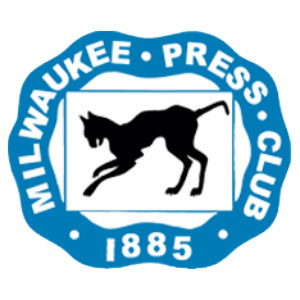By Bill Barth and Stephanie Klett

Preservation of history can be thought of as a gift we give ourselves and our progeny.
Visitors to Lake Geneva come to experience the beauty of a world-class tourism destination centered around the water, loaded with entertainment attractions and fine restaurants and unique shops.
Residents see it as home, a safe community blessed with a strong economy, good schools, efficient public and private services, a great place to live and work.
Underneath all that, though, is a story. The story of the people.
History.
Who was here first? How did European-descended settlers discover the beauty of the lake? How did the community grow? When did it become a playground for tourists? Who were the prominent citizens who built the great estates? How has the community changed and evolved through the years?
History is best left to the experts who assemble it for everyone to enjoy.
Fortunately, we had the pleasure of sitting down with Geneva Lake Museum’s administrative co-directors Janet Ewing and Sonja Akright. They are delightful and they know their stuff.
“We share the same passion for local history and for the area,” Sonja told us.

The Geneva Lake Museum was founded 40 years ago and for the past 20 has been located downtown, at 255 Mill St., in a former Wisconsin Power and Light building. The facility has 20,000 square feet and is jam-packed with interesting and unique exhibits. No matter how well you think you know the region, a visit will produce a learning experience filled with surprises.
“For me it’s an incredible variety of history, all in one hub,” Janet said. “Every small town doesn’t have the kind of history that we have. We’ve really been blessed in that way. We try to keep everything Geneva Lake-related, which means the whole lake, the watershed. It means Fontana, Williams Bay, Linn and all surrounding areas.”
The lake area has a rich history as a gathering place for Native Americans long before the first settlers arrived and, yes, the museum includes displays with artifacts of the indigenous people. Col. John Kinzie is remembered as the first explorer to see the lake, in May of 1831.
The famous Northwestern Military and Naval Academy – now the site of the South Shore Club – occupies a large display. The site originally was the home of a Potawatomi encampment. Some may remember the Academy was used as a location by Hollywood for the movie Omen 2. The museum’s Academy display includes scale representations of two murals featured at the school, one showing the Potawatomi camp and the other the Kinzie party’s discovery of the lake.
It was fascinating to learn about the community’s long association with health-related sanitariums, which included facilities for medical patients, the mentally ill, light nervous disorders, substance rehabilitation, even an institution for children. Live-in facilities catered to the wealthy. Sonja has made the sanitarium period, from 1885 to 1932, her topic of deep study.
“I am incredibly enthralled with the sanitariums of Lake Geneva,” she told us. “I wrote a book about it. I’ve done a lot of research. I have an exhibit. That’s something that speaks to people. It’s something that’s relevant.”
The industry took root in Lake Geneva largely because of its proximity to Chicago and its wealthy class, allowing families to easily travel by train to visit patients.
“The people (patients) that came here were wealthy people,” she said. “Their people felt good about sending them to Lake Geneva.”
The wealth that turned Lake Geneva into a destination is well documented in museum displays, from artifacts taken from historic properties such as Ceylon Court and Black Point. And, of course, Hugh Hefner’s Playboy Club – now occupied by the Grand Geneva Resort and Spa – has a popular and prominent display.
One of the newer – and wildly popular displays – focuses on the Wizard of Lake Geneva, Gary Gygax, and the birth of his world-wide gaming phenomenon Dungeons & Dragons.
“I love the history of the people who live on the lake, the estates. What a variety of different companies these people owned,” Janet said. “But I also have a soft spot for the people who lived here and helped support those people. They took care of the grounds, did the farming. It’s always been a beautiful place to come to and a desirable place to live for families.”
Seriously, folks, there are far too many exhibits for us to detail here. The brick Main Street that winds through the museum. Buddy Melges’ world championship sailing history. Early firefighting. Pioneer kitchen. One-room school. Trains. Even mobsters.
Locals and visitors alike love the place.
“It’s a healthy blend,” Sonja said. “There are people who come back to visit often. We have people who stumble in, who say ‘I’ve lived here my whole life and didn’t know there was a museum. I’ve never seen any of this stuff’.”
For more information visit the website (genevalakemuseum.org).
The column is produced by the husband and wife team of Bill Barth and Stephanie Klett. Bill is the former Editor of the Beloit Daily News, and a member of the Wisconsin Newspaper Hall of Fame. Stephanie is the President and CEO of Visit Lake Geneva, and the former Secretary of the Wisconsin Department of Tourism.



